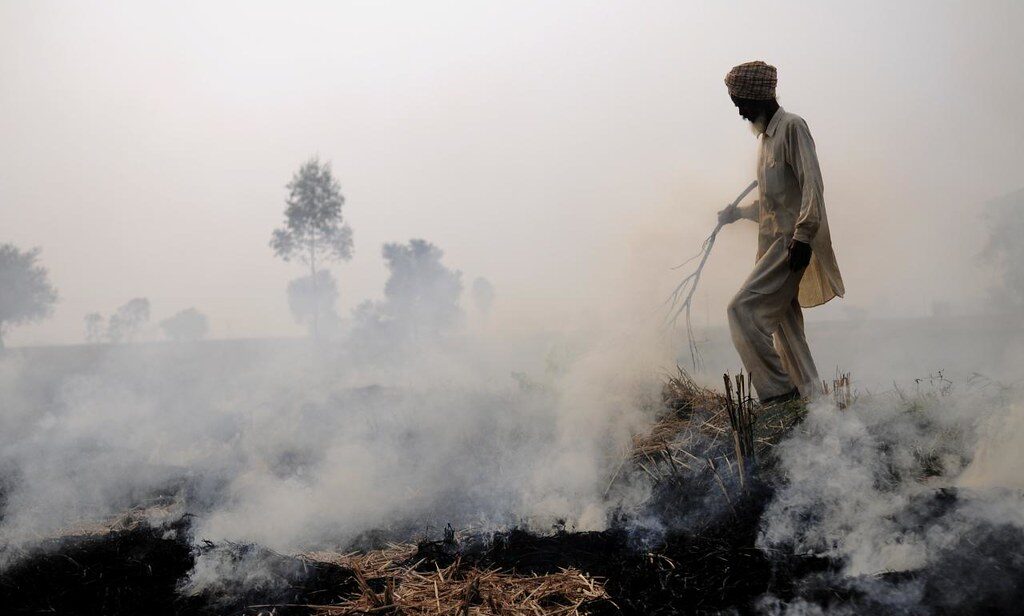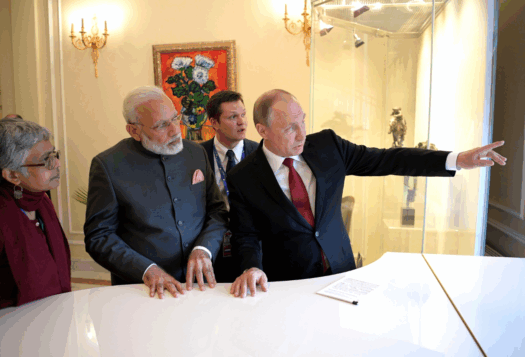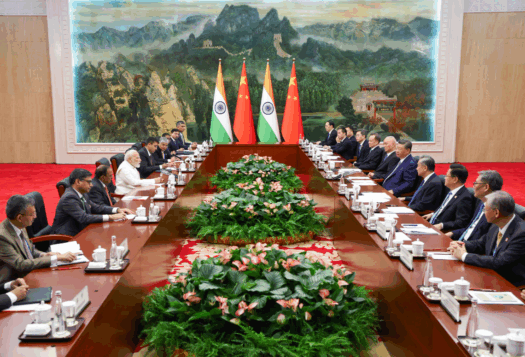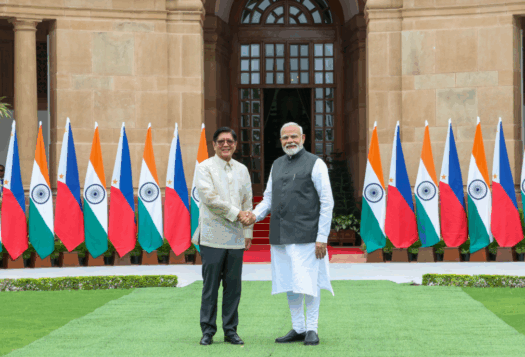
Each year, winter air pollution transforms a season of festivity into a public health crisis in South Asia. The region hosts 29 of the world’s 30 most polluted cities and endures significant health and economic repercussions as a result. According to World Bank estimates, pollution in South Asia causes around 2 million premature fatalities and economic losses to the tune of almost 7.4 percent of Gross Domestic Product. In highly populated cities, concentrations of fine particulate matter — called PM2.5 — can exceed the threshold recommended by the World Health Organization (WHO) by as much as 20 times. The crisis transcends national boundaries as cities such as New Delhi in India and Lahore in Pakistan consistently log unhealthy and hazardous readings on the air quality index. Recently, this issue was in the news again when Chief Minister Maryam Nawaz of Pakistan’s Punjab province called for “smog diplomacy” with India.
To alleviate South Asia’s smog problem, India and Pakistan need to overcome political tensions and build collaboration. Given the transnational nature of air pollution, neither country can successfully resolve the crisis without the active cooperation of the other. To this end, the two countries must establish effective enforcement mechanisms, align their emissions rules, and jointly promote funding for sustainable development initiatives. Success in combating air pollution will not only enhance the lives of millions of people in South Asia but will also engender goodwill between India and Pakistan.
Roots of South Asia’s Smog Problem
A key driver of winter pollution in South Asia is the annual practice of stubble burning in the Indian and Pakistani provinces of Punjab. Each year, before the onset of winter, farmers in both countries incinerate agricultural stubble in order to clear fields and fertilize them for the winter crops. The practice is popular because it is fast and cost-effective. But it is also responsible for emitting dense clouds of particulate matter into the atmosphere, which severely impacts the air quality of nearby cities such as New Delhi and Lahore.
To alleviate South Asia’s smog problem, India and Pakistan need to overcome political tensions and build collaboration. Given the transnational nature of air pollution, neither country can successfully resolve the crisis without the active cooperation of the other.
Separately, vehicular emissions also significantly contribute to air pollution in densely populated South Asian cities. Most South Asian countries still lag behind much of the Western world in the adoption of tighter emissions standards, particularly on heavy-duty vehicles and two-wheelers. They are also plagued by the poor implementation of existing environmental standards, the widespread presence of outdated car fleets, and the inadequate availability of cleaner fuel alternatives. The region has also been relatively slow to adopt electric vehicles, which are increasingly acknowledged worldwide as an effective means to mitigate vehicular pollution. Electric vehicles constitute approximately 25 percent of new car sales in Europe, as per 2023 data, and over 17 percent of car sales in Asia. But in India, electric vehicles accounted for slightly over 1 percent of total automobile sales in 2022. This large disparity is a result of the relatively high cost of electric vehicles and the absence of proper charging facilities across South Asia. Increased urbanization is only serving to exacerbate these challenges as more people buy automobiles and burn fossil fuels.
The Burden of India-Pakistan Tensions
South Asia’s smog crisis is a striking example of a regional problem that transcends political boundaries, but tensions between India and Pakistan have stymied collaboration. Cities in both countries — in particular, Lahore and New Delhi — consistently top global rankings for air pollution during the winter. Pollutants from one country often diffuse into towns and villages in the other country owing to winds. But this has only caused political leaders in both India and Pakistan to blame each other for the problem. A top official in the Indian state of Uttar Pradesh recently accused Pakistan of contributing to escalating pollution levels in New Delhi. In response, Pakistani authorities blamed India for worsening smog in Lahore.

Cooperation between Pakistan and India has always been challenging, even on an issue such as this where working together would not have huge political costs. In 1998, eight South Asian nations, including Pakistan and India, signed the Male Declaration in an effort to address transnational air pollution through monitoring, capacity building, research, and impact assessment. Yet, despite the establishment of an effective foundation for regional cooperation, which included a joint inventory of emissions in the region, the Declaration’s efficacy was constrained by insufficient funding and a lack of political will. These challenges require robust collaboration and dialogue, but because of bilateral tensions, India and Pakistan hesitate to take action.
To overcome the air pollution crisis, India and Pakistan must find a way to cooperate, even if it is to establish dialogue and collaboration limited to this specific issue. “Winds don’t know there is a border in the middle,” said Chief Minister Maryam Nawaz of Pakistan’s Punjab province recently as she conveyed her intention to correspond with her Indian counterpart, Chief Minister Bhagwant Singh Mann of India’s Punjab province, on the issue of air pollution. Both New Delhi and Islamabad must adopt this attitude and build a collaborative framework of policies, preventive strategies, and technical innovations to alleviate transnational air pollution.
Opportunities for India-Pakistan Collaboration
In order to jointly combat air pollution, India and Pakistan can take several steps, including sharing of technological advancements in pollution prevention and air quality monitoring. The two countries each have specific comparative advantages that may benefit the other. For instance, Pakistan has mandated the installation of air purifiers in all shopping malls and commercial plazas in Punjab. These air purifiers may be sourced from India, where air purification is already a mature industry. Additionally, India can also collaborate with Pakistan on the implementation of eco-friendly practices, especially in solar energy and sustainable urban development. This partnership can capitalize on India’s manufacturing capabilities and Pakistan’s creative investments in sustainable technologies.
The two countries can also work with each other to improve the adoption of electric vehicles, including by studying and developing cleaner fuel substitutes and investing in the distribution of charging facilities. Similarly, long-term advantages may also result from cooperation in effective waste management strategies and updated public transit networks.
To shift away from crop burning, Pakistan and India should encourage the adoption of alternative agricultural practices. These include solutions such as zero-tillage farming, which entails the planting of crops without soil disturbance, thereby removing the need to burn crop residues; mulching, which consists of applying crop remnants to the soil to enhance moisture retention and soil vitality; and composting, whereby crop residues are decomposed to produce organic fertilizers, thereby enriching the soil and minimizing waste. If stubble burning ends, crop residue may be used for the production of biogas or charcoal. The two countries may propagate all of these techniques within their farming communities through collaboration on research, training, and financial incentives.
Success in combating air pollution will not only enhance the lives of millions of people in South Asia but will also engender goodwill between India and Pakistan.
More broadly, New Delhi and Islamabad would do well to revive the Male Declaration for regional cooperation on air pollution and learn from its past deficiencies. Regional solutions to this problem would require enhancing the enforcement of long-term air quality monitoring as well as standards, aligning emissions regulations across borders, and promoting stable funding for the Declaration’s initiatives. To achieve these ends, the two countries could restart a regional dialogue on the need for a collaborative structure with mutual obligations and open oversight.
Last but not least, pollution control depends heavily on public awareness at the grassroots level. The state governments of both the Punjab provinces should work together to develop coordinated education efforts, highlighting the adverse health effects of pollution, and encourage actions that lessen harmful emissions at the individual level. Measures that they should encourage include increased use of public transportation and household waste management.
Without a doubt, there will be political obstacles to overcome in order to successfully implement these collaboration efforts. However, India and Pakistan need to put aside political differences when it comes to matters concerning public health and the preservation of the environment. For climate diplomacy to be successful, both governments would need to place a higher priority on long-term environmental goals than they would on short-term political interests. The pollution crisis affecting India and Pakistan gives the two rivals a unique chance to work together to address climate change. Both countries can mitigate the adverse effects of pollution on public health and simultaneously encourage broader climate initiatives, if they engage in collaborative data-sharing, research, and planning activities. Such collaborative measures could also act as a catalyst for a thaw between the two countries. Through the implementation of smog diplomacy, Pakistan and India have the potential to safeguard millions of individuals from the potentially fatal effects of air pollution. In doing so, they will also transform the winter months from an annual health crisis to a time of celebration.
Also Read: The Path Forward for Pakistan’s Energy Transition
***
Image 1: CIAT/NeilPalmer via Flickr
Image 2: ARIF ALI/AFP via Getty Images


